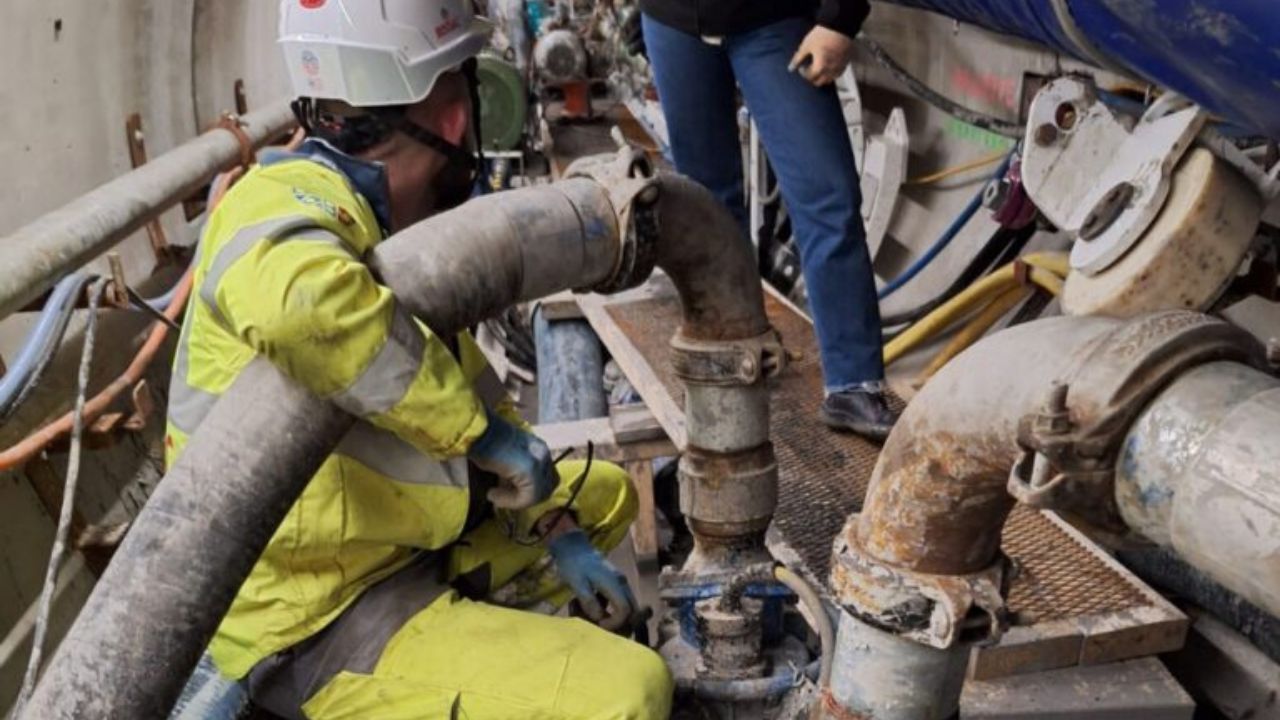Building the new high-voltage line has taken years to get underway – but now things are moving forward. Dewatering is crucial in the challenging environment, where the line runs entirely underground and three-quarters of the way under the sea. BESSAC, the tunnelling contractor, is relying on Tsurumi drainage pumps, which have proven their worth in similar challenges.
Across the Bay of Biscay
The INELFE (INterconnexion ÉLectrique France-Espagne) project of the two grid operators Red Eléctrica and RTE is a milestone in European energy infrastructure. It will allow electricity to be transferred between France and Spain to improve security of supply from 2028. This is particularly important for Spain, which has comparatively few connections to the European grid.
The centrepiece of the project, now estimated at 3,1 billion Euros, is the construction of a 393-kilometre, four-strand direct current cable. It will run from Cubnezais, north of Bordeaux, across the Bay of Biscay to Gatika, near Bilbao. With a transmission capacity of twice 1000 MW, the project extends the existing link to around 5000 MW. This puts the interconnection capacity on a par with that of France’s other neighbouring countries.
The submarine cable route was chosen to minimise the impact on the environment, especially as the existing 400 kV overhead lines cannot handle the current flow. The submarine cable is 300 km long. The underground cable sections between the converter stations are 80 km on the French side and 13 km on the Iberian side.
The diamont KTZ
BESSAC, a specialist in tunnelling and pipeline construction with 40 years’ experience and a fleet of over 40 tunnel boring machines, relies mainly on the KTZ415 for dewatering in the three tunnels on the route, but also on other Tsurumi pump models. The reliable performance of these pumps ensures that water entering the tunnels during construction is efficiently pumped out.
The KTZ415 is specially designed for use in extreme conditions. With a maximum flow rate of 1980 litres per minute and a head of up to 55 metres, it is in the upper mid-range of the 17-model range. It is one of the manufacturer’s best-selling pumps and, according to the manufacturer, “has been used in almost every major tunnel project in Europe”. Tsurumi comes up with a lot of ideas to get its pumps into the top league and keep them there: The centrifugal oil distributor with double internal mechanical seal in the oil bath, the encapsulated, hermetically sealed power supply and ultra-hard materials such as silicon carbide (only diamond is harder) are examples. As a result, the pumps are safe to run dry. It is also often emphasised that they can be maintained and repaired by the user in the field using standard tools.
A century of expertise
With exactly 100 years of experience in developing pumps for construction and industrial applications, Tsurumi has established itself as a reliable partner. The company’s pumps are in use all over the world, tackling even the most difficult tasks – from dewatering in hard rock tunnels to large construction sites. With a production capacity of one million units and a product range that includes over 500 models with capacities from 30 m³/min to 216 m head in Europe alone, Tsurumi is the largest manufacturer in the industry. In addition, the company does not manufacture to order, but can supply almost the entire range from local stock within hours – a factor that can be particularly important in dewatering.
Source: Tsurumi (Europe) GmbH



